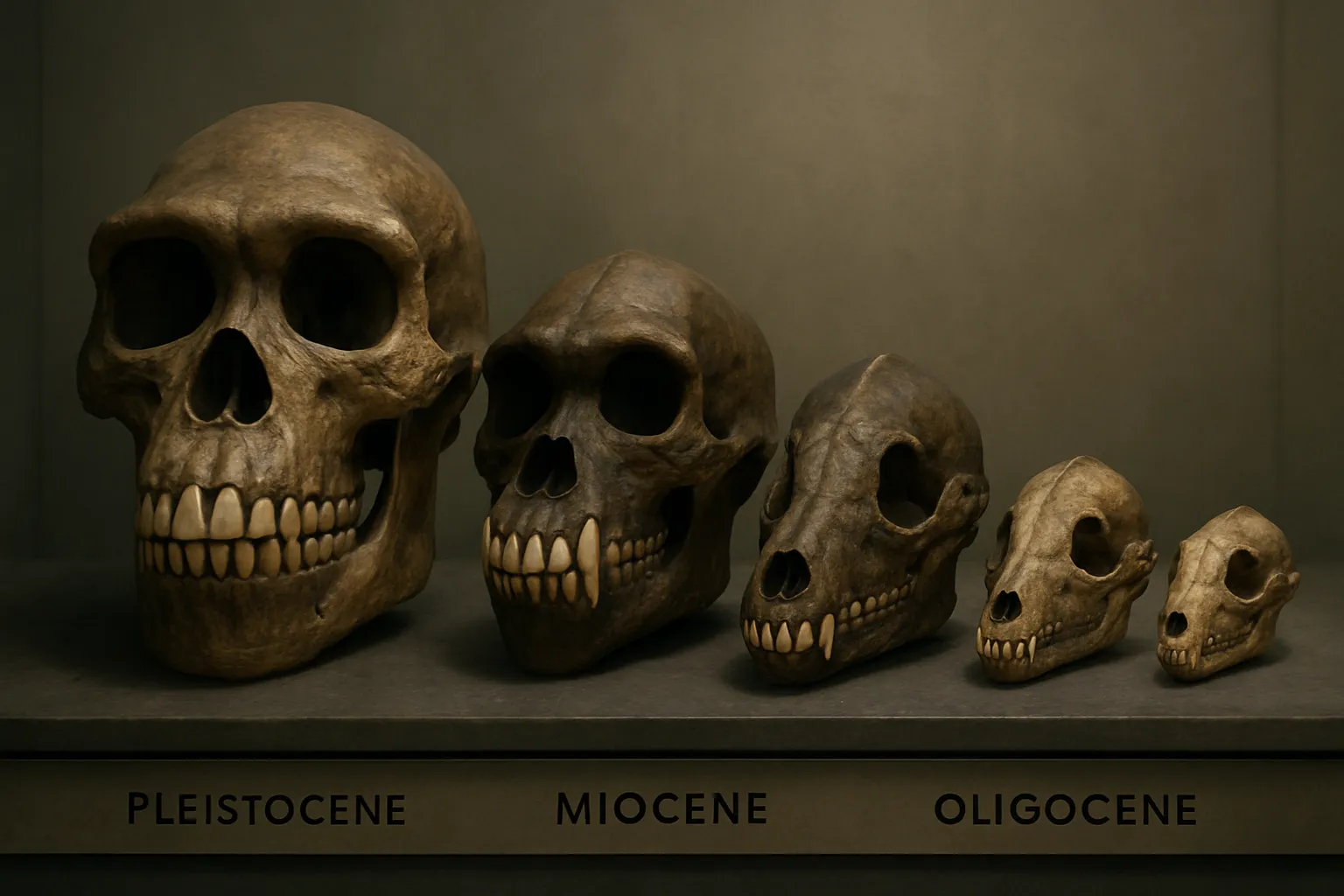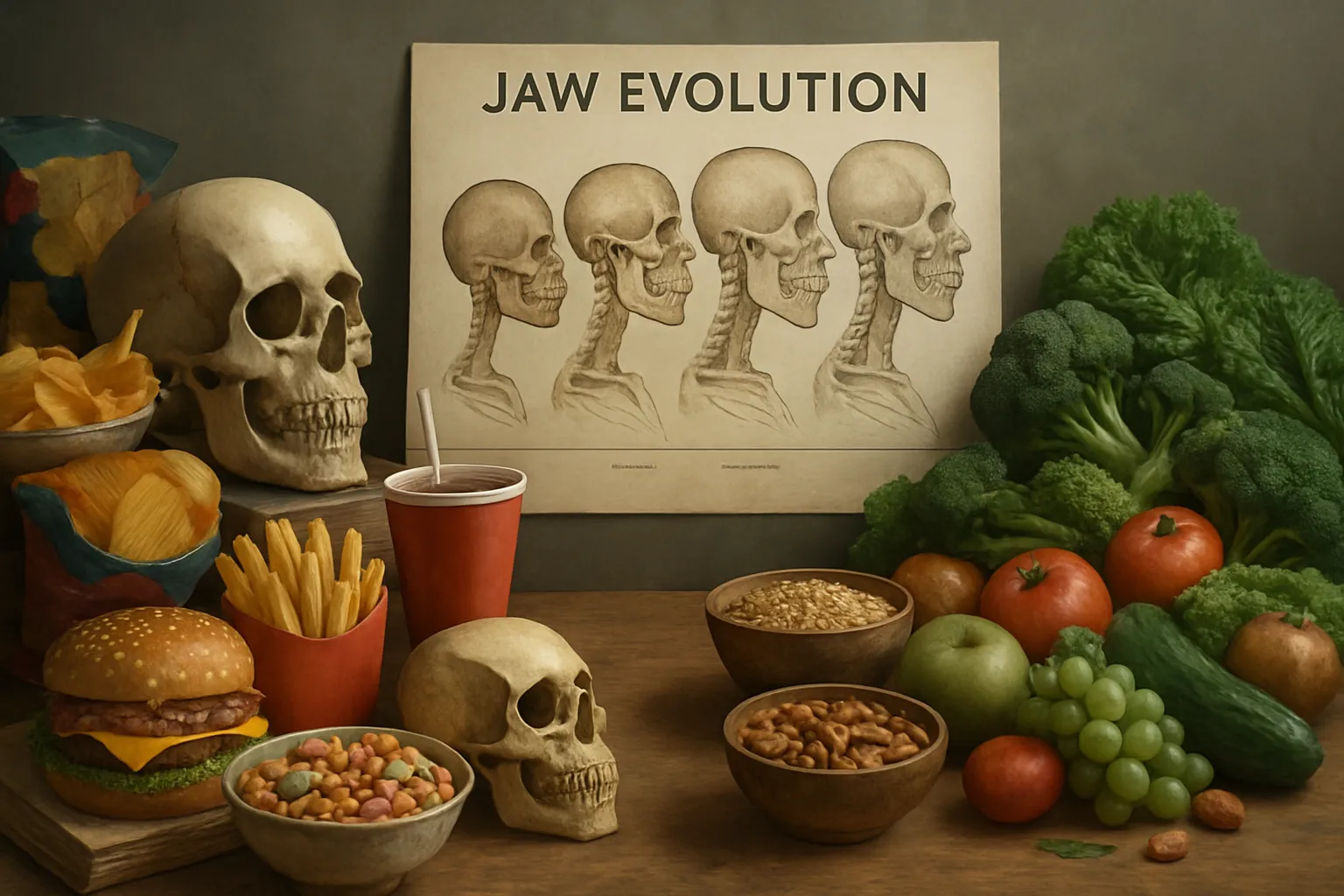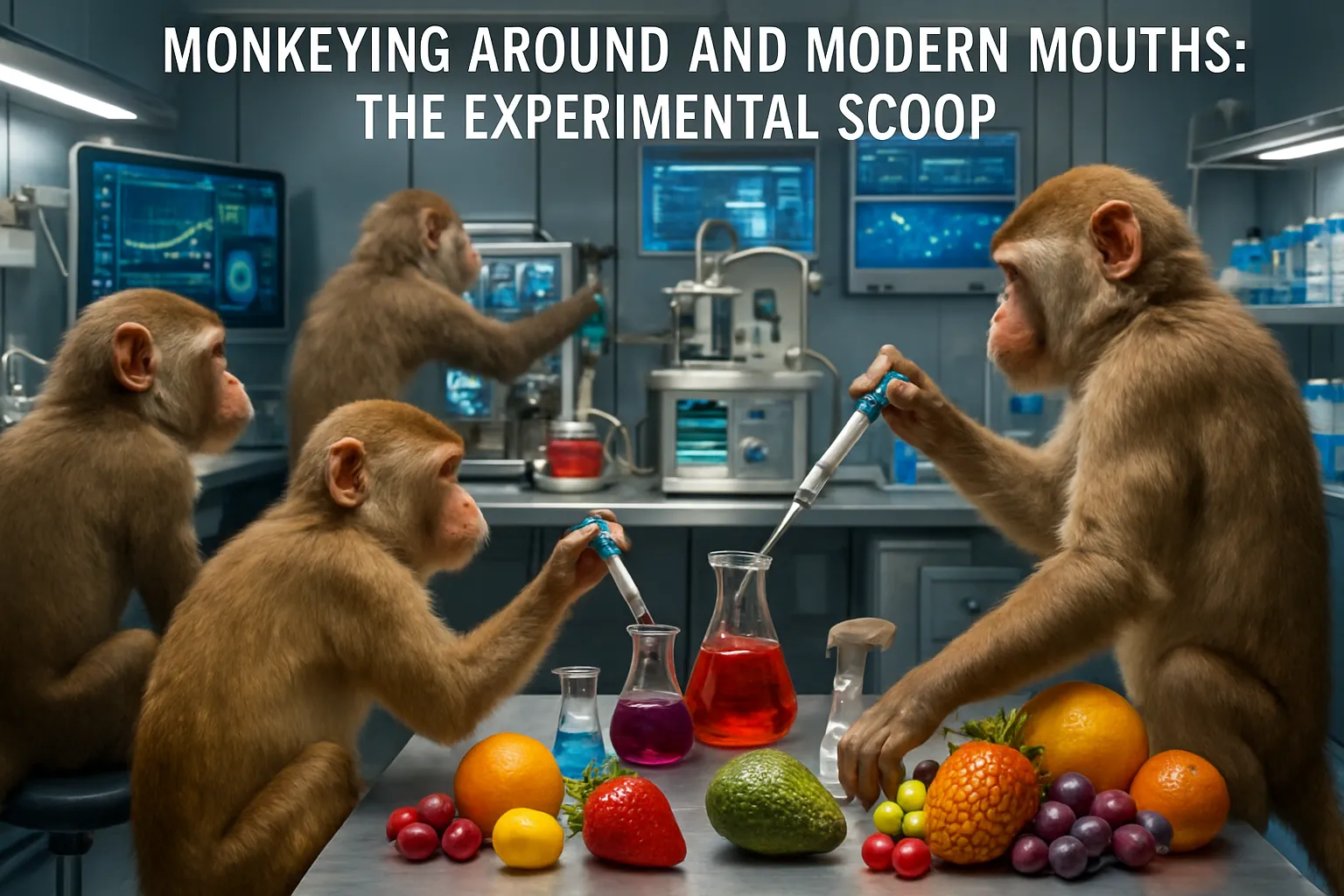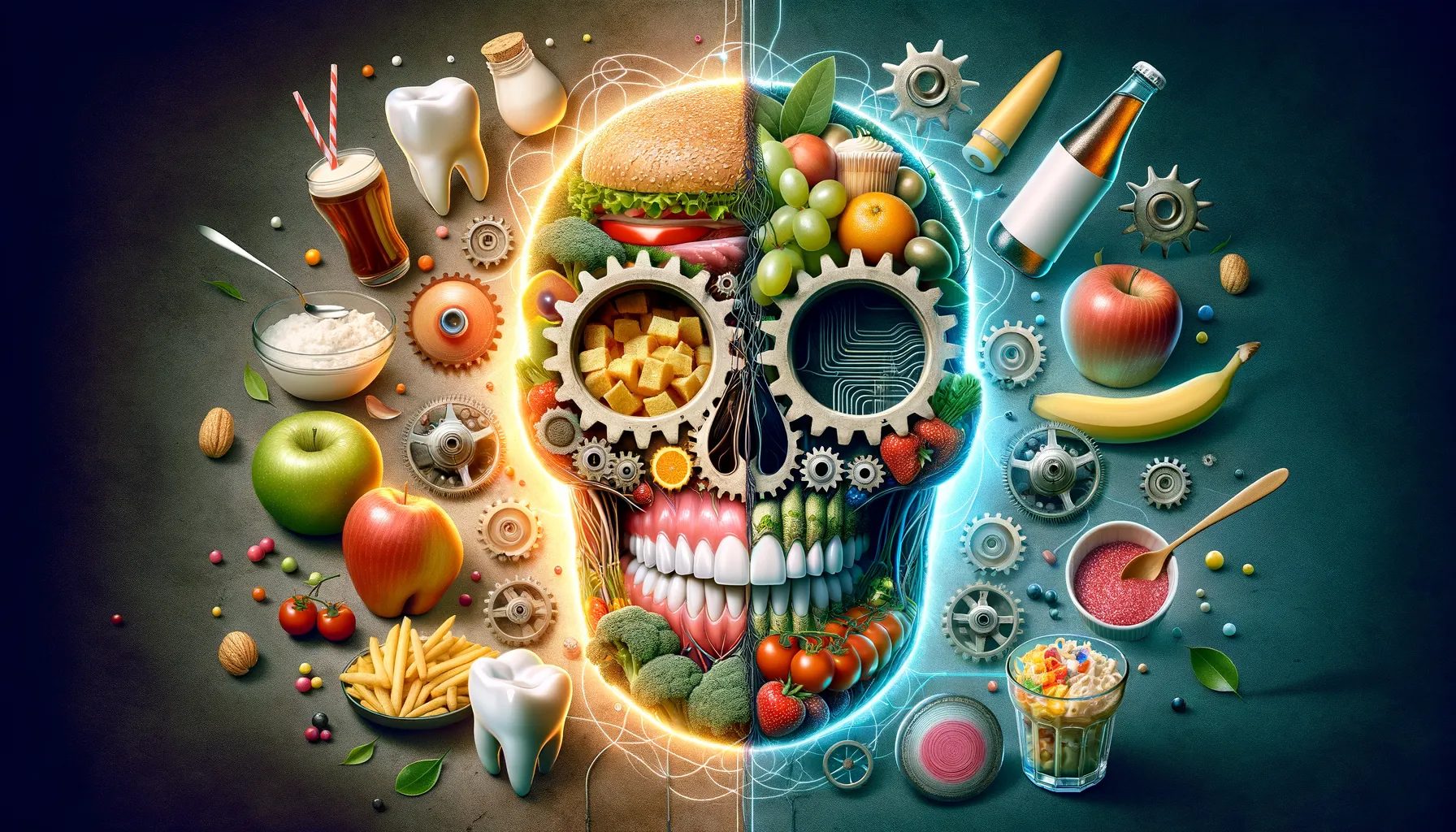The other day, as I sat in the dentist's chair counting the ceiling tiles and thinking about my own battle with braces, a wild question popped into my head: Did cavepeople ever worry about crooked teeth? Turns out, this little curiosity sent me down a rabbit hole of dental history—and the answers are as chewy as a strip of ancient jerky. Let's take a bite out of our tooth evolution and discover how humanity's love affair with soft, processed foods may be behind our modern dental woes.
Straight Teeth Through the Ages: The Fossil Evidence
As I delved into the fossil record of dental health, I found myself amazed by a simple, striking fact: all these ancient skulls have perfectly straight teeth despite almost certainly never sporting braces. This isn’t just a rare exception. When researchers study ancient human teeth, from early hunter-gatherers to more recent pre-industrial populations, they consistently find jaws filled with straight, well-aligned teeth. Even wisdom teeth—those notorious third molars that so often cause trouble today—fit comfortably in the jaws of our ancestors.
Looking at ancient skulls, you’ll notice something that’s almost absent in modern mouths: full sets of teeth, including wisdom teeth, sitting in neat rows. The fossil record dental evidence is clear. For most of human history, dental crowding and crookedness were extremely rare. In fact, the dental issues that fill today’s orthodontic offices—braces, extractions, and impacted wisdom teeth—are almost never seen in ancient skeletons.
So, what’s changed? The answer lies in how our ancestors lived and ate. Early humans relied on tough, fibrous diets that demanded serious chewing. Their jaws and teeth were larger, shaped by the need to grind and crush raw plants, nuts, and meat. This constant chewing acted like a natural orthodontic treatment, guiding teeth into straight alignment as the jaws grew and developed. The result? Ancient human teeth were not only straight, but their jaws were spacious enough for all 32 teeth, including those third molars.
It’s only in the last few thousand years—especially since the rise of agriculture and, later, industrial food processing—that things began to shift. As diets softened and required less chewing, our jaws gradually became smaller. But here’s the catch: our teeth didn’t shrink at the same rate. This mismatch meant less space for teeth to erupt, leading to the dental crowding and crookedness so common today. The fossil record dental evidence shows this change clearly: while ancient skulls almost never show impacted or crowded teeth, these problems are widespread in modern populations.
Wisdom teeth evolution is a fascinating part of this story. In ancient skulls, third molars usually erupted without issue. Today, however, wisdom teeth often become impacted, stuck beneath the gumline, or force other teeth out of alignment. This is why wisdom teeth extractions are now a routine dental procedure—something our ancestors never needed.
- Ancient skulls: Straight teeth, full dental arches, healthy wisdom teeth.
- Modern humans: Crowded teeth, frequent need for braces, common wisdom tooth problems.
Researchers have even found that some present-day populations who still eat traditional, unprocessed diets—requiring lots of chewing—rarely experience dental crowding or wisdom tooth impaction. Their jaws develop more fully, echoing the patterns seen in ancient human teeth. This suggests that environment and lifestyle, not just genetics, play a huge role in shaping our smiles.
When I look at the fossil record dental evidence, it’s clear that the straight teeth of our ancestors weren’t a genetic fluke. They were the natural result of a lifestyle that demanded more from our jaws—one that modern diets have left behind.

Jaw-Dropping Changes: How Our Diets Shrank Our Smiles
When I think about the evolution of teeth and jaw size, I can’t help but picture my ancient ancestors gnawing on roots, tearing into raw meat, and crunching on tough seeds. Back then, having a big, strong jaw wasn’t just a facial feature—it was a survival tool. Our ancestors’ diets were packed with unprocessed foods that demanded serious chewing power. Their jaws and teeth were large, and the surfaces of their molars showed heavy wear from years of grinding and crushing whatever nature provided.
But everything started to change when humans discovered the magic of tools and fire. Suddenly, food didn’t have to be so tough. Cooking and early food preparation techniques made meals softer and easier to chew. Over thousands of years, our jaws didn’t have to work as hard. The physical demands on our mouths dropped, and so did the size of our jaws and teeth—at least, at first, they shrank together.
The Processed Food Revolution
Fast forward to about twelve thousand years ago, and the world was in the midst of the agricultural revolution. People began farming, domesticating animals, and inventing new ways to process food. Milling technology stripped away the tough outer layers of grains, making bread and rice softer and easier to eat. Then came the industrial revolution, and with it, an explosion of processed foods. Suddenly, even the toughest foods were transformed into something our jaws barely had to work for.
- Ancient diets: Required large jaws and teeth for tough, raw foods.
- Cooking and tools: Made food softer, reducing chewing demands.
- Food processing: Milling and refining made diets even softer.
As our diets became softer and more processed, the effects on our jaws were dramatic. Researchers have observed a gradual decrease in tooth and jaw size in humans and our ancestors. But here’s where things get interesting: for most of our history, jaw and tooth size shrank at about the same pace. But with the rapid changes brought by agriculture and industry, our jaws started shrinking faster than our teeth.
When Evolution Couldn’t Keep Up
This mismatch between jaw size and tooth size is at the heart of many modern dental problems. Our teeth didn’t get the memo that our jaws were shrinking, so now they’re left fighting for space. That’s why so many of us deal with crowded teeth, crooked smiles, and the need for orthodontic work. As one researcher put it:
Researchers have observed a gradual decrease in tooth and jaw size in humans and our ancestors.
It’s a classic case of evolution being outpaced by culture and technology. Over millennia, the effects of processed food on teeth and jaws have left us with smaller mouths and less room for our teeth—a far cry from our big-jawed, tough-chewing ancestors. The story of jaw size changes is written right in our smiles, shaped by every bite our ancestors took and every shortcut we’ve invented in the kitchen.

Monkeying Around and Modern Mouths: The Experimental Scoop
When I first started digging into the causes of dental crowding, I was surprised to find that the answers weren’t just buried in our genes. Instead, some of the most eye-opening clues came from experiments with our distant animal relatives—monkeys and even hyraxes. These studies offer a fascinating look at how what we eat shapes our smiles, and they help explain why dental crowding and impacted wisdom teeth are so common today.
Monkey Business: The Squirrel Monkey Study
Back in 1983, researchers set up an experiment with 43 squirrel monkeys. They split the monkeys into two groups: one group munched on their usual tough, natural foods, while the other got a much softer, processed diet. The results were striking. The monkeys eating softer food developed more crowded premolars, rotated or displaced teeth, and noticeably narrower dental arches. In other words, their jaws didn’t grow as wide or as strong as those of their tougher-food-eating peers. This was one of the first clear signs that dental crowding causes go beyond genetics—diet and dental health are tightly linked.
Hyraxes and the Power of Chewing
Fast forward to 2004, and another team of scientists decided to test this idea with hyraxes (think: small, furry mammals). They raised some hyraxes on raw and dried foods, while others got cooked, softer meals. The outcome? The hyraxes eating cooked foods showed about 10% less growth in the facial areas used for chewing. Their jaws were smaller and less robust, echoing the same pattern seen in the monkey study. This experiment made it even clearer: softer, processed foods can literally shrink our jaws.
Not Just a Genetic Story
What really struck me about these studies is how much our environment and lifestyle matter. As one researcher put it:
In other words, the issue at large seems to be environmental or one of lifestyle instead of a genetic one, though heritable factors may be at play in some instances.
It’s not just about the DNA we inherit. The foods we choose—especially how processed or soft they are—play a huge role in shaping our dental health. That’s why populations eating traditional, less processed diets often don’t experience the same rates of dental crowding or impacted wisdom teeth that we see in the modern world.
Modern Diets, Modern Problems
- Today, an estimated 30-60% of people deal with dental crowding.
- Impacted wisdom teeth are also on the rise, thanks in part to smaller jaws.
- But in communities where tough, natural foods are still the norm, these dental dramas are much less common.
The takeaway? Our jaws are shaped not just by our genes, but by what we chew. That means prevention is possible—by paying attention to diet and early orthodontic care, we can help keep our smiles healthy and spacious.

Wild Card: If Jaws Could Talk (A Hypothetical Meet-and-Greet)
As I reflect on the winding path of orthodontic history and jaw evolution, I can’t help but imagine what it would be like if our jaws could actually talk. Would they grumble about the endless parade of smoothies and soft breads, or would they thank our blenders and food processors for granting them an early retirement from the hard labor of chewing? Sometimes, I picture my own wisdom teeth as party guests who showed up fashionably late, only to discover there’s no room left at the table—perhaps a little resentful that my love of soft foods left them out in the cold.
If our jaws could voice their opinions, I suspect they’d have a lot to say about the dramatic changes in their workload over the centuries. In the days of our ancient ancestors, jaws were the unsung heroes of survival, grinding through tough roots, raw grains, and sinewy meats. Their daily grind (quite literally) shaped their size and strength, keeping teeth in neat, functional rows. But as our diets softened with each culinary innovation—from fire to farming to the industrial revolution—our jaws found themselves with less to do. It’s almost as if, somewhere along the way, they traded in their work boots for slippers.
This shift didn’t just change our smiles; it rewrote the rules of oral health. The rivalry between tooth and jaw evolution became a central theme in orthodontic history. Our teeth, stubbornly holding onto their ancestral size, began to crowd and jostle for space as our jaws shrank. The result? Crooked teeth, impacted wisdom teeth, and a booming business for orthodontists. I sometimes wonder: what would happen if we all decided to eat nothing but jerky and raw carrots for a decade? Would our jaws bulk up again, stretching to accommodate our teeth as they did in the past? Would braces and wisdom tooth extractions become relics of a softer era?
It’s a fun thought experiment, but it also highlights how closely our oral health is tied to our environment and habits. If ancient diets made a comeback, would dental professionals shift from straightening teeth to helping people manage jaw fatigue? Would we see a new wave of “chewing gyms” instead of orthodontic clinics? The possibilities are as fascinating as they are endless.
Ultimately, reflecting on the past helps us chew over solutions for the future—quite literally. Our jaws may not be able to speak, but their story is written in every fossil, every crowded smile, and every wisdom tooth extraction. As we move forward, perhaps the best thing we can do is listen to what our evolutionary history is telling us: that the choices we make today, from what we eat to how we care for our teeth, will shape the smiles of tomorrow.
Well, it’s certainly something to chew over.
TL;DR: Modern dental problems like tooth crowding and impacted wisdom teeth can be traced back to changes in our diets and lifestyles, not just genetics. Our jaws have shrunk, but our teeth haven’t—and that’s made for some crowded real estate inside our mouths.



